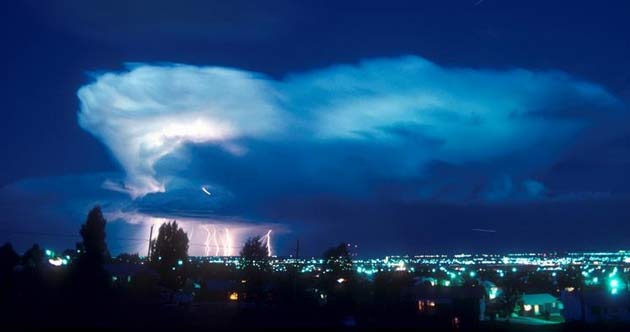New Model Promises Better Weather Forecasts

Weather forecasting has long been slightly disconnected from cutting-edge weather science. Forecasts are based on models that often do not take into account the latest discoveries of how Mother Nature works.
That gap is closing now with a new forecasting model that not only predicts weather but can also be used to do weather research. It incorporates data from satellites, radars, and several other tools to create higher-resolution data sets that result in significantly better forecasts.
Sweatiest U.S. Cities / Weather 101 / Weather Images
The computer model, called Weather Research and Forecasting model (WRF), has now been adopted as the backbone for U.S. weather forecasts.
Because the model fulfills both functions, it is easier for research findings to be translated into improved operational models, leading to better forecasts, scientists said today.
“The Weather Research and Forecasting model development project is the first time researchers and operational scientists have come together to collaborate on a weather modeling project of this magnitude,” said Louis Uccellini, director of NOAA’s National Centers for Environmental Prediction.
By late 2007, the model will also be used by the national weather agencies of Taiwan, South Korea, China, and India.
Get the world’s most fascinating discoveries delivered straight to your inbox.
“WRF is becoming the world’s most popular model for weather prediction because it serves forecasters as well as researchers,” says NCAR director Tim Killeen.
Tests over the past year revealed the following benefits:
- Errors in nighttime temperature and humidity across the eastern United States are cut by more than 50 percent.
- The model depicts flight-level winds in the subtropics that are stronger and more realistic, thus leading to improved turbulence guidance for aircraft.
- The model outperformed its predecessor in more than 70 percent of the situations studied.
The new computer model will be used by NOAA’s National Weather Service (NWS) as the primary model for its one-to-three-day U.S. forecasts and as a key part of ensemble modeling system for forecasts that go out several days. It was created by NOAA and the National Center for Atmospheric Research (NCAR), and more than 150 other organizations and universities in the United States and abroad.
- Natural Disasters: Top 10 U.S. Threats
- Galleries: Lightning / Tornadoes / Clouds
- Cell Phone Towers Double As Rainfall Monitors
- Scientist Reading the Leaves to Predict Violent Weather
- New Satellite Provides 'Breathtaking' Views Inside Storms
- Weather 101: All About Wind and Rain
- All About Weather



